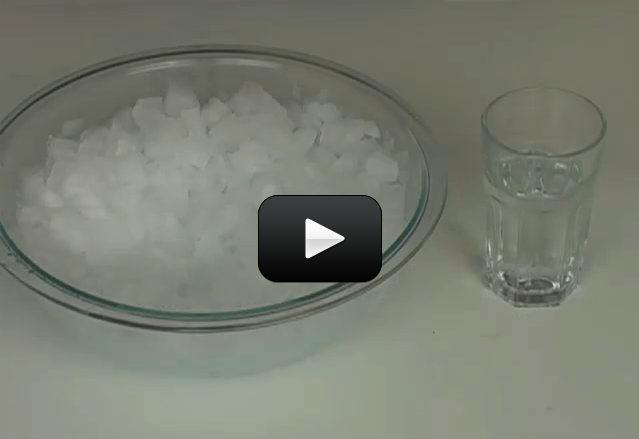Supercooling a liquid is a really neat way of keeping the liquid a liquid below the freezing temperature. Normally, when you decrease the temperature of water below 32oF, it turns into ice. But if you do it gently and slowly enough, it will stay a liquid, albeit a really cold one!
In nature, you’ll find supercooled water drops in freezing rain and also inside cumulus clouds. Pilots that fly through these clouds need to pay careful attention, as ice can instantly form on the instrument ports causing the instruments to fail. More dangerous is when it forms on the wings, changing the shape of the wing and causing the wing to stop producing lift. Most planes have de-icing capabilities, but the pilot still needs to turn it on.
We’re going to supercool water, and then disturb it to watch the crystals grow right before our eyes! While we’re only going to supercool it a couple of degrees, scientists can actually supercool water to below -43oF!
Please login or register to read the rest of this content.


This one is tricky because the temperature difference is so small (I recommend the Hot Icicles experiment because it uses sodium acetate which has a 70 deg F temp difference). You’ll need to get the water REALLY cold so that its ready to crystallize. You can use rock salt or table salt, and if you stick the whole thing in the freezer for 20 minutes (not too much longer) that might help.
Hello, I had a few problems with this experiment and I was wondering what might help. We tried it three different times—the first time, we forgot to crush the ice beforehand and the water wasn’t cold enough because not enough of the ice was touching it— but after that we couldn’t figure out what we were doing wrong. We tried leaving it in the ice for longer but it still wasn’t working… do you have any ideas?
I would use a thermometer to make sure the temperature is correct. The conditions need to be just a few degrees below 32 deg F (0 deg C) for this to work. Ice is an insulator, so it will take a bit for it to cool completely. Try again, leaving it in overnight, and then see if it works better. Keep trying!!
Hi Aurora! We tried the instant ice experiment and we set it for over 20 minutes (because 15 did not work), and it still does not work, though we get an extremely thin layer of ice around the glass.